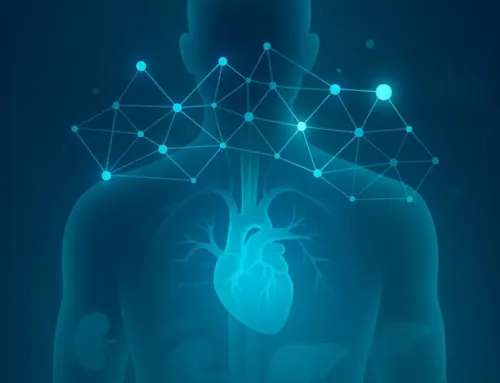
Approx. read time: 5 min.
Post: What Fasting Really Does to Women’s Metabolism and Why It Might Boost Oxidative Fibers
Fasting is one of the most talked-about trends in wellness, with advocates claiming everything from weight loss to longevity benefits. But how does fasting actually affect women’s metabolism? And what does it mean when experts say it increases “oxidative fibers”?
The conversation gets scientific fast, so let’s unpack it. We’ll explore the physiology behind fasting, how it interacts with women’s unique hormonal systems, and why this oxidative fiber thing matters at all. Spoiler: fasting isn’t inherently bad for women—but context is everything.
Understanding Oxidative Muscle Fibers
To get what fasting does, we first need to understand muscle fiber types:
- Type I fibers (oxidative/slow-twitch): These are built for endurance. They use oxygen to convert fat into energy. They’re packed with mitochondria and fatigue-resistant.
- Type II fibers (glycolytic/fast-twitch): These are power fibers. They rely more on glucose for quick bursts of energy, fatigue faster, and have fewer mitochondria.
When someone says fasting increases oxidative fibers, they’re talking about a metabolic shift: the body becoming more efficient at using fat (not sugar) as a primary fuel source. This is particularly beneficial for endurance, fat loss, and overall metabolic flexibility.
How Fasting Triggers Metabolic Adaptation
Fasting isn’t just about not eating. It’s a signal. When your body goes several hours without food, a few key things happen:
- Insulin drops
- Glucagon rises
- AMPK (AMP-activated protein kinase) gets activated
AMPK is like the body’s energy sensor. When it detects low energy (from fasting), it triggers processes to make energy more efficiently. This includes:
- Encouraging fat burning
- Inhibiting fat storage
- Stimulating PGC-1α, a molecule that promotes mitochondrial biogenesis
Mitochondria are the powerhouses of your cells. More mitochondria = more fat-burning capacity. This shift supports the development of more oxidative muscle fibers.
In short: fasting tells your muscles to get better at using fat, not carbs. That’s a major win for metabolic health.
Why This Matters More for Women
Women are not just smaller versions of men. Metabolically and hormonally, women operate differently.
Here’s what research has found:
- Women naturally have more oxidative (Type I) fibers than men.
- They burn more fat and less glucose at rest and during low-to-moderate intensity exercise.
- Their muscles take up more fat due to higher lipoprotein lipase activity.
These traits suggest women are evolutionarily wired to preserve glucose (for brain and reproductive function) and rely more on fat during energy stress. So when a woman fasts, her body tends to upregulate fat metabolism faster and more efficiently than a man’s.
That sounds great—and it can be. But there’s a big caveat.
The Hormonal Catch
While women have this fat-burning advantage, they also have more sensitive endocrine systems.
The hypothalamic-pituitary-gonadal (HPG) axis, which regulates reproductive hormones, is quick to respond to changes in energy availability. If the body senses a chronic energy shortage, it might:
- Lower luteinizing hormone (LH) levels, disrupting ovulation
- Suppress thyroid hormone (especially T3)
- Increase cortisol (the stress hormone)
Translation: If fasting is too frequent, too long, or paired with intense exercise and low calorie intake, it can lead to menstrual irregularities, thyroid issues, mood swings, and burnout.
This is why many women report feeling great at first on a fasting protocol, only to hit a wall after a few weeks or months.
What the Science Says
Let’s ground this in actual studies:
- A 2020 paper in Journal of Applied Physiology found that women in fasted states oxidized more fat during exercise than men, even though men showed more immediate improvements in glucose tolerance.
- Animal studies show intermittent fasting increases Type I muscle fiber expression and mitochondrial function.
- A 2018 study found that alternate-day fasting improved metabolic markers in both men and women, but women were more likely to experience increased cortisol levels.
These findings support the idea that fasting can be beneficial, but the metabolic and hormonal tradeoffs are gender-specific.
Practical Applications: How Women Can Fast Safely
The key isn’t avoiding fasting altogether. It’s about fasting strategically. Here are some guidelines:
1. Use Shorter Fasting Windows
Women often do better with 12- to 14-hour fasts rather than the full 16+ hour windows popularized in intermittent fasting (IF) circles. Overnight fasting (7pm to 9am, for example) is usually sustainable and hormone-friendly.
2. Avoid Fasting Every Day
Mix it up. Alternate fasting days with normal eating days. This mimics natural rhythms and avoids chronic energy restriction.
3. Eat Enough During Eating Windows
Under-eating during your feeding window compounds the stress of fasting. Make sure you’re eating enough calories and nutrients—especially protein and healthy fats.
4. Time Fasting Around Your Cycle
Women may feel more resilient to fasting during the follicular phase (day 1 to ovulation) and more sensitive during the luteal phase (post-ovulation to period). Adjust your fasting intensity accordingly.
5. Listen to Your Body
If your sleep worsens, energy crashes, or your period goes MIA, that’s your body telling you the fasting approach needs tweaking.
Final Thoughts
Fasting, when done right, can be a powerful metabolic tool for women. It enhances oxidative muscle fiber activity, boosts fat-burning, and improves mitochondrial health. But it must be tailored to your physiology, cycle, and lifestyle.
Fasting is not a one-size-fits-all approach. For women, especially, it’s a strategy to be personalized—not pushed to extremes.
Metabolic health isn’t just about burning fat. It’s about hormonal balance, energy resilience, and long-term sustainability. The real win is knowing when to push and when to pause.
So yes, fasting can boost your fat-burning muscle fibers. Just make sure it’s serving your whole body, not just a number on the scale.
Related Videos:
Related Posts:
Unlocking Optimal Health: Insights from the Glucose Revolution
Top Foods That Rebuild Mitochondria for Optimal Health and Energy
The Vital Role of Fiber in Everyday Health and Disease Prevention
Intermittent Fasting (IF) and Protein can boost your Gut Microbiome Diversity
Metabolic Health and Nutrition: A Lifelong Guide to Well-being









